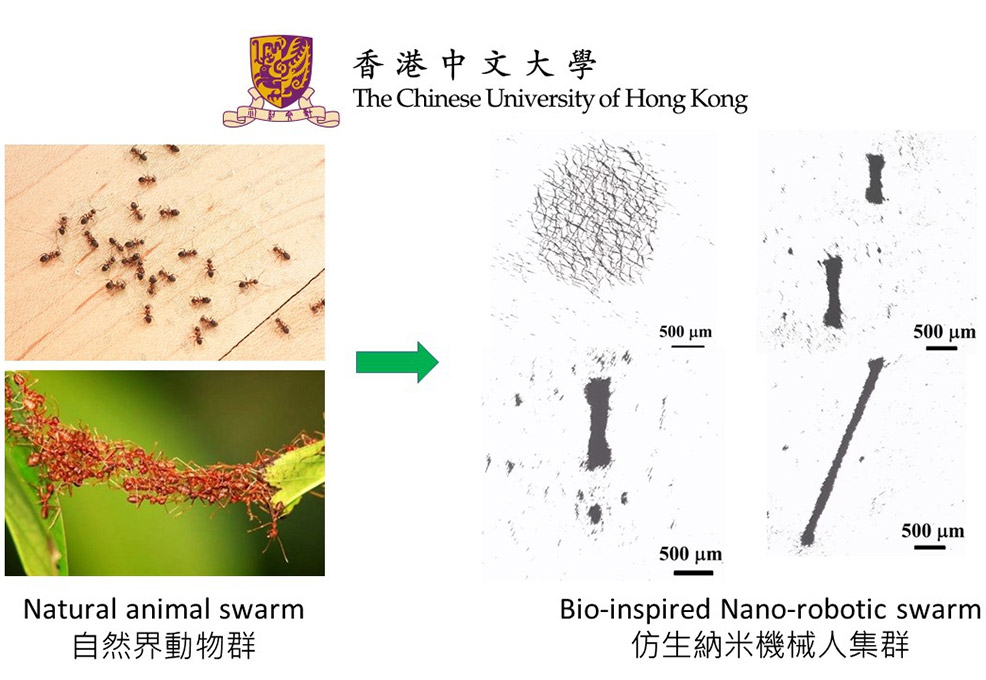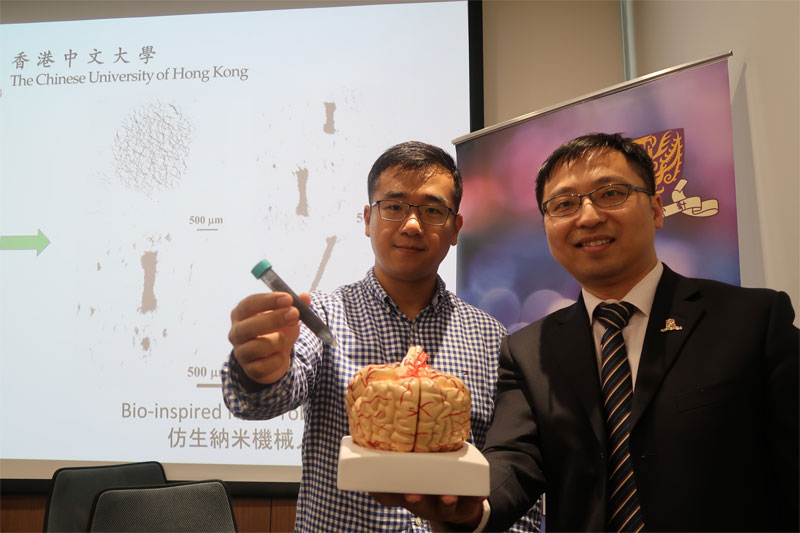
5th September 2018 Nanobot swarming behaviour demonstrated by Chinese scientists A new way of controlling nanobots could help surgeons do complex tasks, such as passing drugs through tiny spaces in the human body.
Nanobots are tiny machines with components on the scale of nanometres. A new way to control the collective movement of these objects has been developed by researchers from the Chinese University of Hong Kong (CUHK). The team was led by Prof. Li Zhang, an Associate Professor of the Department of Mechanical and Automation Engineering. They studied and implemented swarm behaviours that enable controlled morphological changes and splitting. The scientists foresee a high potential for in-vivo biomedical applications, such as targeted drug delivery, thanks to these reconfigurable swarms that show environmental adaptability. Their work appears in the prestigious international science journal, Nature Communications. Swarm behaviours – such as bird flocks, fish schools and bacteria colonies – are common in nature. Through communication, these organisms can dramatically change their group shapes according to the environments they interact with. For example, ants can create structures like chains or bridges, using only their interconnected bodies as building blocks, in order to traverse difficult terrain. Inspired by natural swarming behaviour, researchers are developing robot swarms in which modular units can cooperate to accomplish tasks that are difficult or impossible to be done by individual agents. Professor Zhang's team has created an artificial microswarm via the dynamic self-assembly process of millions of magnetic nanobots. By tuning the applied magnetic field, the ribbon-like pattern of the swarm can undergo diverse changes in form and structure – extending or shrinking in an anisotropic manner to alter its properties, for example, or controlled splitting and merging between a single swarm and multiple sub-swarms in a reversible manner. "This new microswarm provides a promising solution for industrial applications such as microfabrication and micromanipulation. It also has a high potential application for in-vivo targeted drug delivery," said Zhang. "Nano-robot swarms can be programmed to help surgeons do complex tasks, such as passing through tiny spaces in the human body. We are now working together with collaborators from the medical school at CUHK to explore and understand the potential for using nano-robots and the micro-robotic platform for clinical applications."
Comments »
If you enjoyed this article, please consider sharing it:
|








